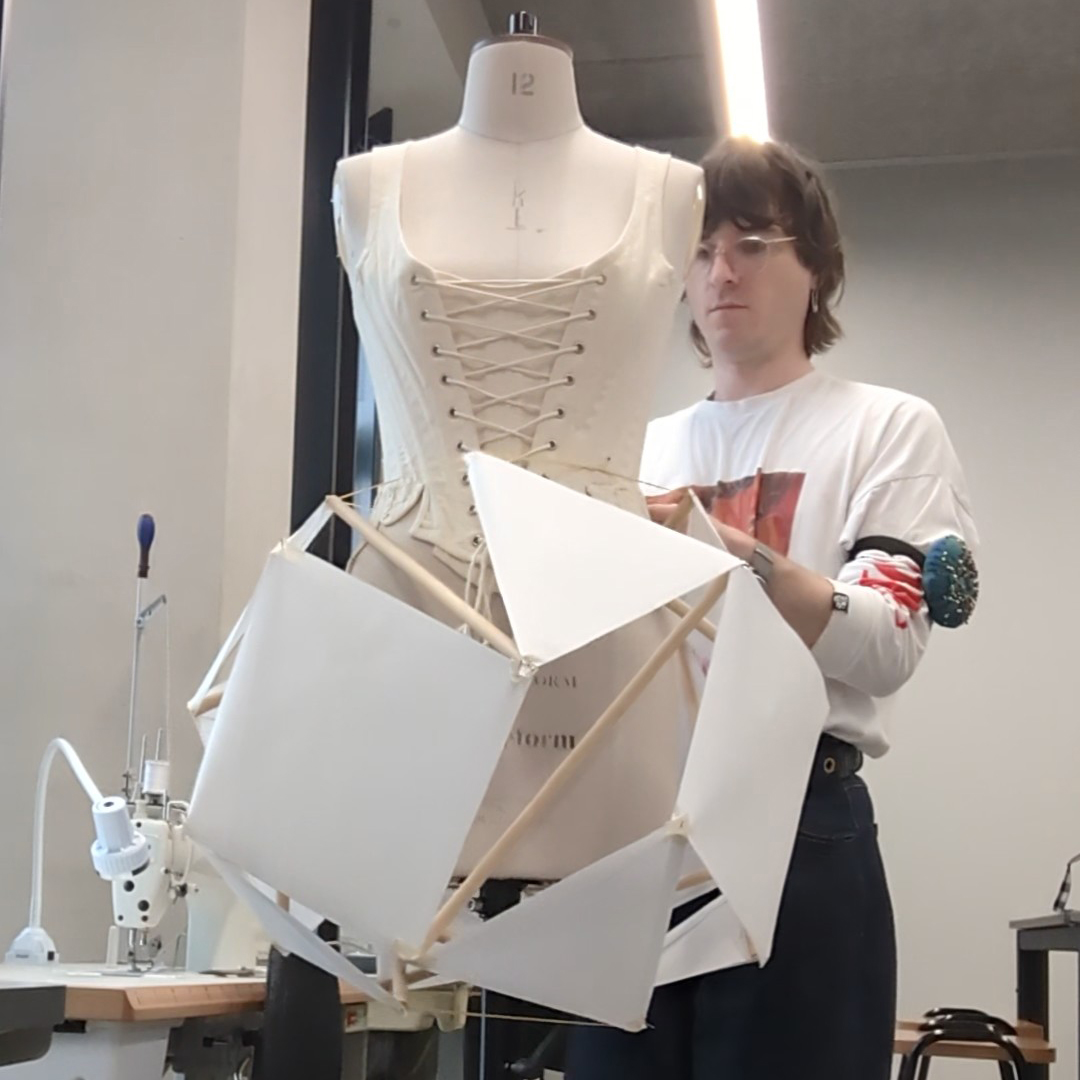Base Notes
Category: Apparel
Competitions: Fashion Competition 2025
My final BA collection was inspired by 19th century European dress, and perfumery from the same period, as natural and synthetic materials started to be used together and changed the industry. This corset was my interpretation of a "leg 'o' mutton" style sleeved corset top, that was a popular silhouette at points in the early 19th century. The sleeves are made using a "tensegrity" technique that I developed through researching the work of Buckminster Fuller, who's architectural designs link strongly to chemical shapes and bonds, which were key references for my collection. I played around with a lot of different ideas to use these techniques to create structural garments, and enjoyed the angular nature of them, which I felt was a great way to modernise classically soft and rounded silhouettes. I had been really keen to work with some vegan leather alternatives, however after ordering a few samples I was disappointed at the lack of biodegradability in many of them. One material did excite me though, and it was a biocomposite made using waste coconut water from coconut farming in India, developed by a company called Malai. I would go on to use this material for the main body of this corset, where it's stiff structure works fantastically to replicate the heavy boning of historical corsets. I developed the pattern for this design from a 1735-50s stay pattern I found in a book, altering it to be more easily wearable, and more in-line with styles from the 1800s too. I used fan lacing at both the front and back of the corset to allow the wearer to easily adjust the fit themselves, and replaced the central "stomacher" pattern that would have been a flat, heavily boned piece, with a more contoured version to better fit the body. The sleeves are made using natural latex, which I found was the perfect material to make the "tensegrity" structures actually functional, as it allows them to move and bend in all directions. The sleeves are detachable from the main body of the corset, as they are quite an extreme design and I wanted to ensure the corset itself was as wearable as possible. The sleeve heads are made from a silk dupion sourced from Whaleys Bradford fused with a heavy cotton fusing soruced from The New Craft House, and the entire corset is lined with the same silk. The central panel is made from a deadstock cotton fabric sourced from Misan, the lacing is also a deadstock cotton option I found at The New Craft House, and the straps are a cotton linen blend from MacCulloch & Wallace. This corset aimed to explore some of the more extreme design of the 19th century, and reimagine it as a modern garment made with biodegradeable materials.

